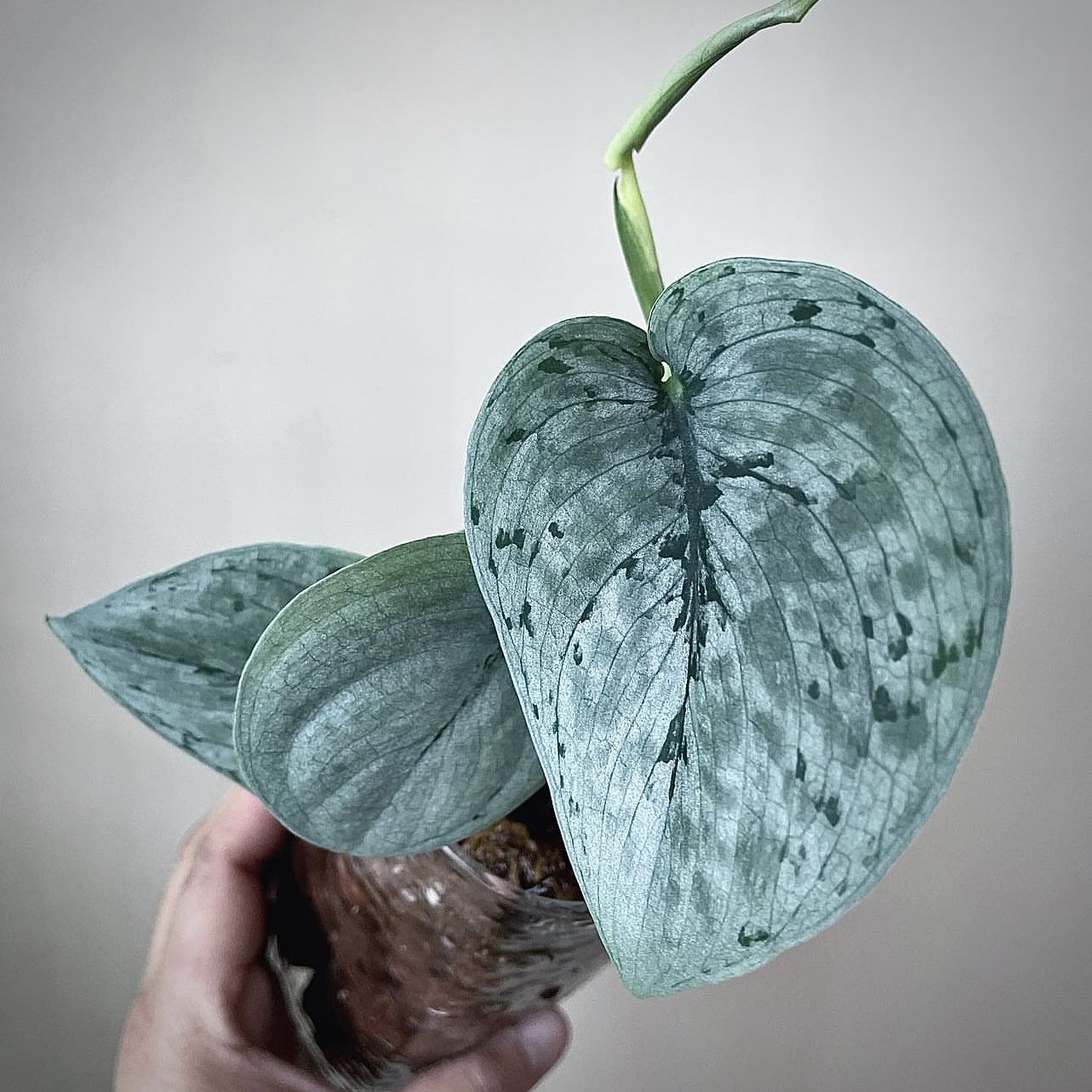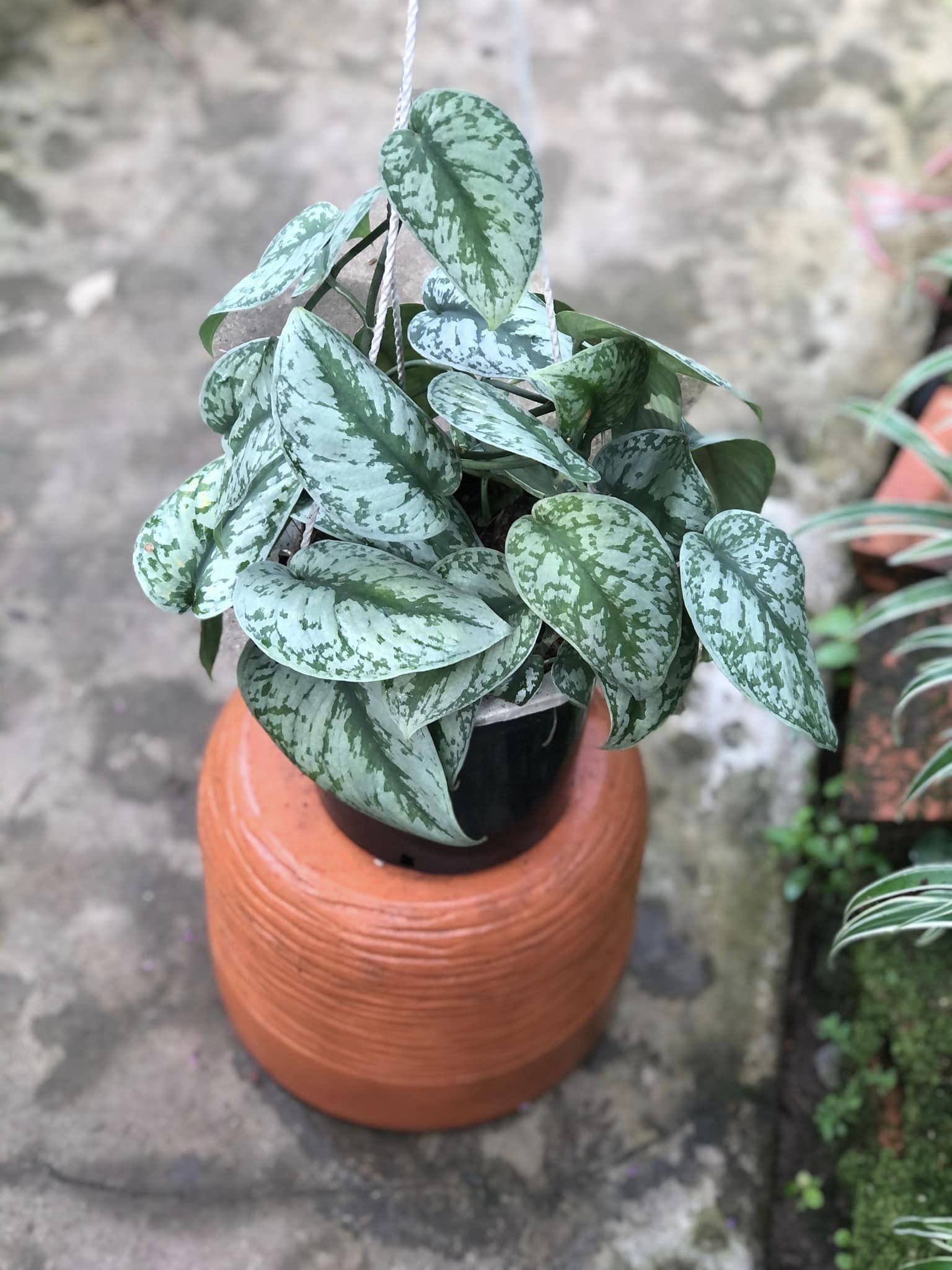Rare Scindapsus Types: Are They Hard to Find?
The Scindapsus genus includes some of the most coveted and visually stunning houseplants. Known for their unique leaf patterns and easy care, these plants are a favorite among indoor gardeners. But how hard is it to find rare Scindapsus types? This guide will explore various rare Scindapsus varieties, their availability, and tips for acquiring them.
Introduction
Scindapsus plants are members of the aroid plant family, which includes popular varieties like Philodendron, Monstera, and Anthurium. Native to the tropical regions of Southeast Asia, these plants are prized for their beautiful, variegated leaves and vining growth habit. Similar to Aglaonema and Epipremnum, Scindapsus plants are not only attractive but also relatively easy to care for.

Scindapsus are native to parts of Southeast Asia, India, Indonesia, and the Pacific Islands.
Natural Habitat and Growing Conditions
In their natural tropical habitat, scindapsus grow as climbing or trailing vines in humid, partially-shaded locations like rainforest understories. They thrive in the warm, muggy conditions and indirect sunlight filtering down through the upper canopy.
Use in Traditional Medicine
Various scindapsus species have also been used in traditional medicinal practices in Asia for treating ailments like fever, cough, rheumatism, and neurological disorders. The biological compounds found in these plants likely contribute to some of their purported therapeutic effects.
While scindapsus abound in jungle habitats, they have become scarce and coveted by houseplant collectors in North America and Europe.

Scindapsus sp. Silver Tattoo
Surge in Popularity
In the past 5-10 years, scindapsus have surged in popularity as indoor houseplants. Their heart-shaped satiny leaves and vigorous vining growth quickly caught the eye of houseplant influencers and designers.
Limited Availability
However, scindapsus have remained relatively rare in mass commercial production. Major retailers tend to focus on easier-to-produce plants, meaning few scindapsus make it to garden centers or big box stores.
High Demand Among Collectors
So while abundant in nature, their limited supply paired with extremely high enthusiast demand has made scindapsus something of a holy grail houseplant. Rare varieties can sell for upwards of $200-500 among collectors!
Several key factors underpin why scindapsus have remained relatively scarce commodities in the houseplant trade.
Discover the most sought-after Scindapsus varieties of 2023

Scindapsus sp. Moonlight Albo
specialized Growing Requirements
Scindapsus prefer tropical environments with high humidity, warm temperatures, and low but bright light conditions. Replicating these specifications can prove challenging in mass commercial greenhouses.
This lighting condition is also suitable for other tropical plants like Syngonium and Homalomena.
Difficulties With Propagation
Scindapsus can also be slower and trickier to propagate than many other common houseplants. Growers need very specific conditions to consistently propagate vines from cuttings or tissue culture.
Slow Growth Rate
Additionally, scindapsus tend to grow at a more sluggish, meandering pace compared to quick-growing pothos ivy or philodendron. Slow maturation extends production timelines and limits yield volumes for wholesalers.
Susceptibility to Pests
Scindapsus' tropical origins also make them more prone to plant-chewing pests than hardy houseplants. Strict integrated pest management programs are essential for mitigating risky crop losses.
While scindapsus availability remains low currently, prospects are looking up for wider circulation through the houseplant trade in coming years.

Expanding Tissue Culture Labs
More specialty plant tissue culture labs are working to ramp up in-vitro production of scindapsus. This method generates higher propagation success rates.
Optimizing Greenhouse Growing
Large wholesalers are also tweaking climate specifications in greenhouses to better match warm, humid jungle conditions. This supports improved maturation and harvesting rates over time.
Mainstreaming Rare Varieties
As techniques improve, the capacity to eventually mainstream coveted rare scindapsus varieties like 'Silver Cloud' or 'Exotica' becomes more feasible.
Scindapsus species are the most sought after by aroid plant lovers
In summary, scindapsus vine species are actually quite abundant across parts of Asia and Indonesia where they originate. But replicating their specialized growing needs has proven challenging for mass commercial greenhouses. As a result, scindapsus have remained difficult-to-procure holy grails amongst indoor plant enthusiasts in Europe and America. However, emerging propagation and cultivation methods provide hope that these glorious jungle vines may become more widely available houseplants in future years.
- Why are some Scindapsus varieties considered rare among houseplant enthusiasts? While Scindapsus plants are abundant in their natural habitat, they have become rare and coveted in the houseplant market, especially in North America and Europe. This rarity is due to their limited supply, specialized growing requirements, and high demand among collectors. Rare varieties can be quite expensive, reaching prices of $200-500.
- What makes Scindapsus plants challenging to grow commercially? Scindapsus plants require specific tropical conditions that are difficult to replicate in mass commercial greenhouses. They need high humidity, warm temperatures, and low but bright light. Additionally, they have a slower growth rate and can be tricky to propagate, which limits their commercial availability.
- Can Scindapsus plants be used for medicinal purposes? Yes, various Scindapsus species have been used in traditional Asian medicine for treating ailments like fever, cough, rheumatism, and neurological disorders. The therapeutic effects are attributed to the biological compounds found in these plants.
- Are there any efforts to increase the availability of Scindapsus plants? Yes, efforts are being made to improve the availability of Scindapsus plants. Specialty plant tissue culture labs are working on increasing propagation success rates, and large wholesalers are optimizing greenhouse conditions to better suit these tropical plants. This could lead to more widespread availability of rare Scindapsus varieties in the future.
- What are the natural growing conditions of Scindapsus plants? In their native tropical habitat, Scindapsus plants grow as climbing or trailing vines in humid, partially-shaded locations like rainforest understories. They thrive in warm and muggy conditions with indirect sunlight, typical of a jungle canopy.
See more: Scindapsus Varieties: Choose the Perfect Plant
https://greenboog.com/rare-scindapsus-types-are-they-hard-to-find/
Introduction
Scindapsus plants are members of the aroid plant family, which includes popular varieties like Philodendron, Monstera, and Anthurium. Native to the tropical regions of Southeast Asia, these plants are prized for their beautiful, variegated leaves and vining growth habit. Similar to Aglaonema and Epipremnum, Scindapsus plants are not only attractive but also relatively easy to care for.

History and Origins of Scindapsus
Scindapsus are native to parts of Southeast Asia, India, Indonesia, and the Pacific Islands.
Natural Habitat and Growing Conditions
In their natural tropical habitat, scindapsus grow as climbing or trailing vines in humid, partially-shaded locations like rainforest understories. They thrive in the warm, muggy conditions and indirect sunlight filtering down through the upper canopy.
Use in Traditional Medicine
Various scindapsus species have also been used in traditional medicinal practices in Asia for treating ailments like fever, cough, rheumatism, and neurological disorders. The biological compounds found in these plants likely contribute to some of their purported therapeutic effects.
Rarity Among Houseplant Enthusiasts
While scindapsus abound in jungle habitats, they have become scarce and coveted by houseplant collectors in North America and Europe.

Scindapsus sp. Silver Tattoo
Surge in Popularity
In the past 5-10 years, scindapsus have surged in popularity as indoor houseplants. Their heart-shaped satiny leaves and vigorous vining growth quickly caught the eye of houseplant influencers and designers.
Limited Availability
However, scindapsus have remained relatively rare in mass commercial production. Major retailers tend to focus on easier-to-produce plants, meaning few scindapsus make it to garden centers or big box stores.
High Demand Among Collectors
So while abundant in nature, their limited supply paired with extremely high enthusiast demand has made scindapsus something of a holy grail houseplant. Rare varieties can sell for upwards of $200-500 among collectors!
Factors Contributing to Rarity
Several key factors underpin why scindapsus have remained relatively scarce commodities in the houseplant trade.
Discover the most sought-after Scindapsus varieties of 2023

Scindapsus sp. Moonlight Albo
specialized Growing Requirements
Scindapsus prefer tropical environments with high humidity, warm temperatures, and low but bright light conditions. Replicating these specifications can prove challenging in mass commercial greenhouses.
This lighting condition is also suitable for other tropical plants like Syngonium and Homalomena.
Difficulties With Propagation
Scindapsus can also be slower and trickier to propagate than many other common houseplants. Growers need very specific conditions to consistently propagate vines from cuttings or tissue culture.
Slow Growth Rate
Additionally, scindapsus tend to grow at a more sluggish, meandering pace compared to quick-growing pothos ivy or philodendron. Slow maturation extends production timelines and limits yield volumes for wholesalers.
Susceptibility to Pests
Scindapsus' tropical origins also make them more prone to plant-chewing pests than hardy houseplants. Strict integrated pest management programs are essential for mitigating risky crop losses.
Outlook for Improved Availability
While scindapsus availability remains low currently, prospects are looking up for wider circulation through the houseplant trade in coming years.

Expanding Tissue Culture Labs
More specialty plant tissue culture labs are working to ramp up in-vitro production of scindapsus. This method generates higher propagation success rates.
Optimizing Greenhouse Growing
Large wholesalers are also tweaking climate specifications in greenhouses to better match warm, humid jungle conditions. This supports improved maturation and harvesting rates over time.
Mainstreaming Rare Varieties
As techniques improve, the capacity to eventually mainstream coveted rare scindapsus varieties like 'Silver Cloud' or 'Exotica' becomes more feasible.
Scindapsus species are the most sought after by aroid plant lovers
Conclusion
In summary, scindapsus vine species are actually quite abundant across parts of Asia and Indonesia where they originate. But replicating their specialized growing needs has proven challenging for mass commercial greenhouses. As a result, scindapsus have remained difficult-to-procure holy grails amongst indoor plant enthusiasts in Europe and America. However, emerging propagation and cultivation methods provide hope that these glorious jungle vines may become more widely available houseplants in future years.
Frequently Asked Questions
- Why are some Scindapsus varieties considered rare among houseplant enthusiasts? While Scindapsus plants are abundant in their natural habitat, they have become rare and coveted in the houseplant market, especially in North America and Europe. This rarity is due to their limited supply, specialized growing requirements, and high demand among collectors. Rare varieties can be quite expensive, reaching prices of $200-500.
- What makes Scindapsus plants challenging to grow commercially? Scindapsus plants require specific tropical conditions that are difficult to replicate in mass commercial greenhouses. They need high humidity, warm temperatures, and low but bright light. Additionally, they have a slower growth rate and can be tricky to propagate, which limits their commercial availability.
- Can Scindapsus plants be used for medicinal purposes? Yes, various Scindapsus species have been used in traditional Asian medicine for treating ailments like fever, cough, rheumatism, and neurological disorders. The therapeutic effects are attributed to the biological compounds found in these plants.
- Are there any efforts to increase the availability of Scindapsus plants? Yes, efforts are being made to improve the availability of Scindapsus plants. Specialty plant tissue culture labs are working on increasing propagation success rates, and large wholesalers are optimizing greenhouse conditions to better suit these tropical plants. This could lead to more widespread availability of rare Scindapsus varieties in the future.
- What are the natural growing conditions of Scindapsus plants? In their native tropical habitat, Scindapsus plants grow as climbing or trailing vines in humid, partially-shaded locations like rainforest understories. They thrive in warm and muggy conditions with indirect sunlight, typical of a jungle canopy.
See more: Scindapsus Varieties: Choose the Perfect Plant
https://greenboog.com/rare-scindapsus-types-are-they-hard-to-find/
Nhận xét
Đăng nhận xét